Road marking is a special marking on the upper plane of the overpass, which carries an informative function for all sides of road traffic. The first markup of this kind appeared in Detroit in the twentieth century. Now road marking is an opportunity to distinguish zones for driving cars.
The application of road markings regulates the process of movement of all sides of road traffic, is an orientation tool, reduces accident rate and controls the movement of auto traffic. The marking, which was applied to the upper plane of the overpass, greatly facilitates the orientation of drivers, especially in conditions of limited visibility.
The source that governs all the provisions on the topic of “road marking” is a local government body.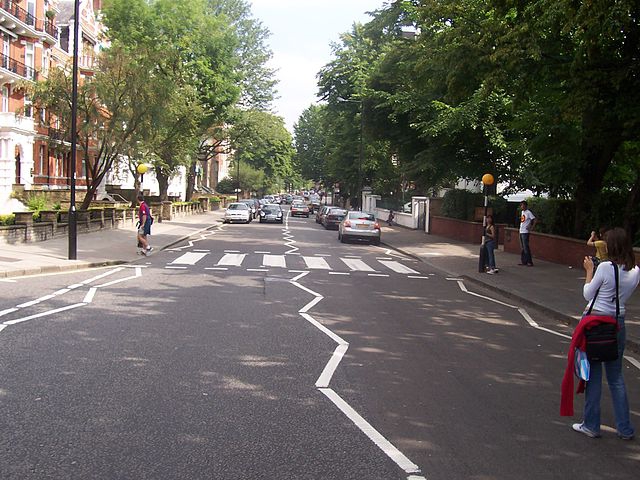
State road marking standard
Each type and color of this road marking on the road has its own meaning. Markings made with white, yellow, blue paint, or red-white, have a permanent purpose. The markings applied during the repair work are orange. According to the requirements of Gosstandart, road marking is divided into two main groups - these are vertical and horizontal track markings. Arrows, drawings, lines, signatures and other signs on the transport bed belong to horizontal. Vertical road marking is applied to the end lines of artificial structures, borders, shields, barriers, etc.
Normative document according to which road marking is applied - GOST 2587-2010. This is a standard that establishes the main parameters, dimensions, technical requirements and application parameters for marking at level crossings, highways and streets.
This document also prescribes the visibility of the marking at a distance, the materials that must be used when applying to guarantee sufficient reflective effect and adhesion coefficient, the service life, the contrast of the applied marking relative to the coating, the maximum degree of marking protruding above the road level and the acceptable coefficient of deterioration during operation . In addition, this regulatory document outlines the control methods for the applied road marking - light and color control, verification of geometric parameters and other important characteristics. According to these data, GOST road marking is established.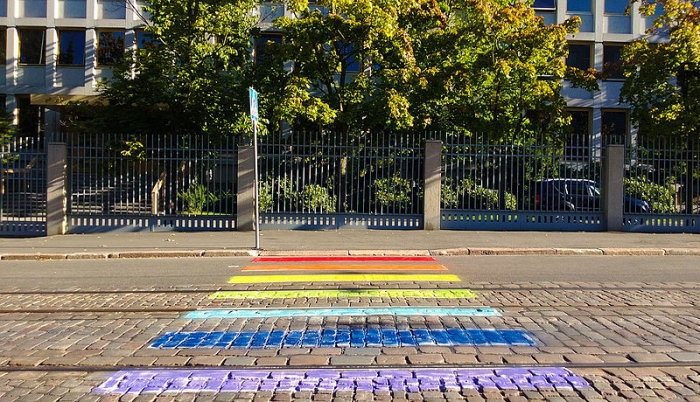
Marking Technologies
There are many technologies that can use various materials - spray plastic, thermoplastics, enamel, polymer tapes, special paints. The main thing is that the material must comply with state standards. Layout technologies are subject to change every year. Temporary marking is done with paints that are easy to remove after finishing work. The roadway can be marked out manually through a stencil, brushes, roller or spray, as well as through the use of technology.
Horizontal road marking
Horizontal marking exists independently or is combined with signs, has the appearance of lines (linear marking), arrows and other symbols. Below are road markings with comments, as well as examples of situations where road signs and markings are combined to emphasize the additional attention of the parties to road traffic.
Linear markings are transverse and longitudinal.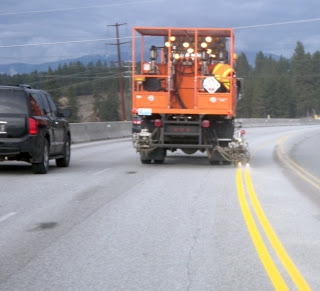
Longitudinal linear marking of traffic
- Solid narrow or wide marking
White narrow continuous road marking separates road lanes from each other, defines the carriageway and restricts parking spaces that are outside the highway, blue indicates the borders of parking spaces located in the carriageway. A narrow yellow solid marking indicates a ban on parking and stopping of motor units, can be combined with the sign "Parking is prohibited."
White wide solid marking limits the carriageway, yellow indicates the zone of movement of the route transport.
- Double solid marking
It shares lanes with oncoming traffic on two- / three-lane roads.
- Dotted and combined markings
1. The standard dashed marking divides oncoming lanes on two- / three-lane highways or divides several lanes of passing auto-traffic on a multi-lane highway.
Wide dotted marking - transition from the fast lane to the main lane (stops, intersections, etc.).
2. Short dashed markings are applied at intersections.
3. Combined marking separates oncoming or accompanying autotraffic in places where restructuring is possible from one lane, as well as places with concomitant autotraffic, places intended for a U-turn, exit, etc.
4. Dotted marking with long segments indicates the approach to solid or combined marking.
5. The yellow dashed marking symbolizes prohibited parking spaces and can be combined with the sign “No parking” or marking prohibiting parking.
6. Dotted double marking divides the lanes of traffic on the segments where regulation takes place with the help of a traffic light.
Cross linear marking
Cross wide marking indicates a place for a mandatory stop in the presence of the sign "STOP".
In this embodiment, she:
- Shows the need to stop for passing vehicles on a crossed road. May be preceded by a certain type of marking.
- A pedestrian crossing is also an example of cross-marking and has a different look depending on factors.
- Ordinary zebra or pedestrian crossing without adjustment.
- Pedestrian crossing equipped with a traffic light.
- Crossing for pedestrians without adjustment in places of road accident.
- The transition for pedestrians without adjustment in the workplace / residence of people with visual problems.
- Regulated transition in places of work / residence of people with vision problems.
- Relocation for cyclists.
Pedestrian crossings or mandatory speed reduction elements are set according to state markings. Thus, the marking on the highway restricts or permits movement on certain segments of the overpass to one or another side of the road traffic.
Sign marking of the road
On the road, you can see arrows that indicate the direction of movement and can be combined with similar signs that govern the direction in lanes, or arrows warning of an upcoming change in marking or of an upcoming narrowing of the road, combined with the signs “Narrowing the road”.
On the road, you can also see markings separating the opposite directions of road traffic or their associated parts. Or it can be the connection of traffic flows, which have the form of a pedestrian area on the highway for pedestrians. They also have places for the stopping of municipal and intercity transport provided for by the route, numbering of the highway, and lanes for the movement of exclusively route motor units.
Pictograms that duplicate signs, such as “Pedestrian crossing”, “Dangerous stretch”, “Speed limit”, “Path for bicycles”, “Parking lot”, “Disabled people” can also be applied to the roadway.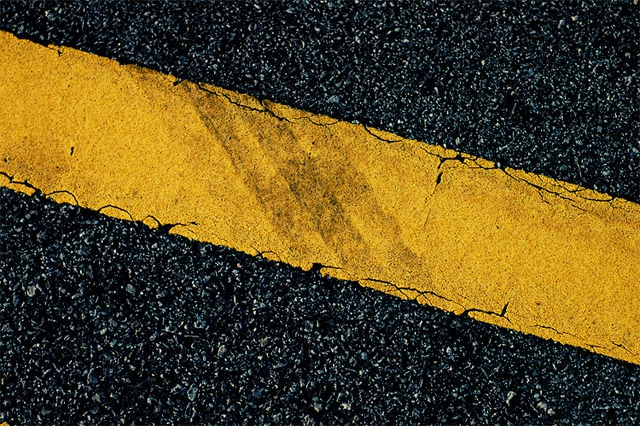
Horizontal marking and traffic rules
If marked with 1.1.restrict parking or parking spaces or the edge of the carriageway, it can be crossed, otherwise - a ban. As an exception, it is allowed to cross marking 1.1 when overtaking a large-sized vehicle or speed of up to 30 km / h. Marking 1.4 is prohibited to cross. Marking 1.2 is allowed to cross for a forced exit from the carriageway.
For marking 1.5, 1.6, 1.7, 1.8, traffic is unlimited, marking 1.9 is allowed to cross only being to the left of it, or if it separates two lanes with the same traffic direction to the green signal of the reverse traffic light. Marking 1.11 is allowed to cross only being on its dotted side.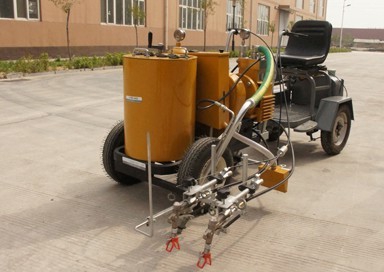
The introduction of fines
For non-compliance with traffic rules, which stipulate certain traffic restrictions by means of road markings, penalties are provided. Vertical marking is for informational purposes only and does not impose any obligations on the current units of movement.
Vertical marking
Vertical road marking 1. 1. superimposed on vertical surfaces not far from the road, its function is to warn of a possible danger.
Vertical road marking is:
- black and white - this is a marking that indicates the end faces and the lower edge of artificial structures (columns, pillars, etc.), columns and borders of islets of safety, side faces of road protections on turns, slopes and emergency stretches;
- yellow - these are borders in areas where vehicles can stand;
- white-red color - these are the vertical planes of the flaps that are installed under the road signs, the end faces of the road barriers, and the markings are made in such a way that its lower edge indicates the direction for detour.
Road Marking Section
In the SDA section “Road marking” 2014-2015, no significant adjustments were made. The latest amendments were made in 2013, when the blue color was introduced for marking 1.1, which limits parking in the carriageway, as well as the orange color for temporary road marking (applied for the period of road repair work). There was a yellow cross marking in front of the speed bump, a red color was added to the marking of some crossings for pedestrians and for cycling.
The importance of road marking
Road marking of traffic rules is very important for the organization of road traffic, as evidenced by its mention in state standards. Before applying the lanes, it is necessary to familiarize yourself with the latest requirements that road markings have for the period of restoration of the road and bringing it into action.
Now you have an idea of how road markings are applied and why it is so necessary on all the streets of your city. Correctly drawn stripes will help prevent hundreds of possible accidents and accidents, in which it will be practically impossible to prove the guilt of a driver.
